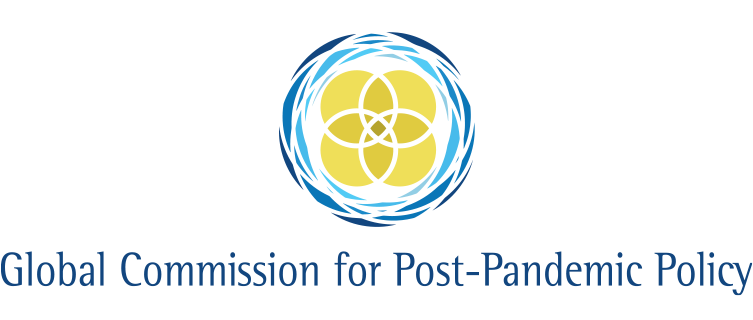Research Monitor
March 8th 2021
Health
The B.1.1.7 strain in the United States
A series of new findings tracks the evolution and spread of the more-infectious coronavirus strain first identified in the United Kingdom—called B.1.1.7—in the United States.
Even as overall cases in the United States continue to decline, an analysis from Helix—a COVID-19 testing company—demonstrates that B.1.1.7 is proliferating exponentially in the country, with the variant’s share of total COVID-19 cases doubling roughly every 10 days. As of March 4th, the strain constituted 24.9% of all American COVID-19 cases tested by Helix.
In a separate analysis, a team of researchers from Lehigh University in Pennsylvania compiled a consensus of 91 forecasts from experts in infectious disease—as well as from trained forecasters at Metaculus, a forecast-aggregation company—to predict the strain’s likely spread over the next month. The consensus forecast predicts that B.1.1.7 will constitute 42% of all American COVID-19 cases in the first two weeks of March, rising to 72% of all COVID-19 cases between March 29th and April 4th. Given the resurgence of COVID-19 in Europe in recent weeks due to the proliferation of the more-infectious B.1.1.7 strain, it is thought likely that the same variant will precipitate at least something of a resurgence in the United States as well, probably from early-April.
These trends were paired with the discovery in Oregon of a variant of B.1.1.7 that has independently evolved the E484K spike-protein mutation, thought to be responsible for vaccine resistance in the novel South African and Brazilian coronavirus strains. The finding came from only a single sample, but it is assumed that the mutated variant is already spreading in the community. This poses a potential threat to the United States’ vaccination programme if the variant spreads widely.
A proposed multi-pronged vaccine strategy
A new article published in the Journal of the American Medical Association makes the case for the differentiated use of the available gamut of vaccines to combat existing coronavirus variants and to prevent the emergence of future ones.
The emergence of vaccine-resistant strains of SARS-CoV-2 in South Africa and Brazil—and the potential future-emergence of other such strains—places the global vaccination effort in a race against time. Fortunately, the different immunological properties, efficacies and dosage regimes of the various approved COVID-19 vaccines offer the opportunity to mitigate those threats with strategic vaccine application. To this end, John Moore—an American virologist and professor at Cornell University’s Weill Cornell medical college—presents an outline of what a differentiated COVID-19 vaccine strategy might look like.
The selective pressure on viruses to evolve vaccine-resistance is greatest when a host’s antibody response is only moderate (rather than strong or weak). For two-dose vaccines, this is a major cause for concern because in the inter-dose period vaccinated individuals become a petri dish for the evolution of vaccine-resistance. As a consequence, Moore’s primary recommendation is that for those with lower risk of COVID-19 mortality—namely, the young and healthy—the Johnson & Johnson single-dose vaccine should be a government’s first port of call, with the higher efficacy two-dose Pfizer-BioNTech and Modern vaccines reserved for the elderly and those with high-risk conditions.
For those that have already been infected with COVID-19, Moore suggests the application of a single dose of the two-dose Novavax vaccine, known for its especially mild side-effects. This is to mitigate a well-established phenomenon, which is that the administration of a COVID-19 vaccine after infection appears to consistently produce notably unpleasant side-effects (such as headaches and mild fever).
Blood type and COVID-19 infection
A new paper published in the journal Blood Advances reports the first laboratory-based evidence that the severity of COVID-19 infection is related to a patient’s blood-type.
There have been a series of recent genetic studies trying to pinpoint whether there are any genetic components to COVID-19 infection risk. It turns out that one of the strongest genetic predictors of infection risk is a patient’s blood group expression—their blood-type.
To investigate the mechanism behind this relationship, a team of researchers from the Emory University School of Medicine led by Shang-Chuen Wu from Harvard University assessed a protein on the surface of the SARS-CoV-2 virus called the receptor binding domain (RBD). The RBD is the part of a virus that attaches to a host cell, and is consequently an important target for understanding how infection occurs. The team looked at blood-type A, B and O respiratory and blood cells, comparing how the SARS-CoV-2 RBD binds to the surface antigens—sugars or proteins on the surfaces of the cells—of the different blood-types.
The study’s results were unambiguous. It turns out that SARS-CoV-2 is significantly more efficient at binding to the respiratory cells of individuals in blood-type A—demonstrating the first explanatory link between blood-type and COVID-19 infection. The observation cannot explain all of the clinically observed links between blood-type and COVID-19 infection, but the finding demonstrates that there are genuinely blood-type-specific infection mechanisms at work.
Politics
A new pre-print paper published on the Social Science Research Network (SSRN) investigates what the optimal government communication strategy is for ensuring compliance with COVID-19 restriction measures.
Throughout the pandemic, lockdowns and confinement measures have provided an effective non-pharmaceutical intervention for slowing the spread of the COVID-19 pandemic. The efficacy of these restrictions, however, has depended heavily on individual compliance, which political leaders and government agencies influence by disseminating information of the virus’s severity. However, lockdown measures have also come at significant economic costs. Around the world, governments have weighed up this trade-off differently—some prioritising the containment of the virus over the economy, and others vice versa. This complexity has also changed how different governments have communicated with their citizens.
To investigate how a perfectly rational government might best induce compliance given its underlying preferences, Francis de Véricourt and Huseyin Gurkan from the European School of Management and Technology, Berlin, as well as Shouqiang Wang from the University of Texas, Dallas, put together an information design model, with the trade-offs implicit in COVID-19 policy built in. Unsurprisingly, the researchers found that a government has an incentive to either downplay or exaggerate the severity of the epidemic if it heavily prioritizes the economy over population health, or vice versa.
What was unexpected, however, was that this distortion is significantly impacted by the levels of economic (wealth and income) inequality in a society. It turns out that the more unequal the disease’s economic impact on the population, the less the government exaggerates the disease’s severity and the more it downplays it. This is because a highly unequal economic impact precipitates a similarly unequal distribution of people’s individual compliance with measures to contain a disease—regardless of a government’s communications of its severity.
With an infectious disease, however, bad behaviour by some impacts everybody—reducing the effectiveness of containment measures and worsening the economic impact of a disease. This incentivises a government to err on the side of economic protection in a context in which an optimal public health outcome is unsalvageable. In other words, those that cannot rely on lockdown-compliance to control infections choose to keep economic activity going instead.
GCPPP Newsletter
We now publish a weekly newsletter to inform friends and supporters of the Global Commission’s progress and to provide updates when new content is published. Please sign up here:








